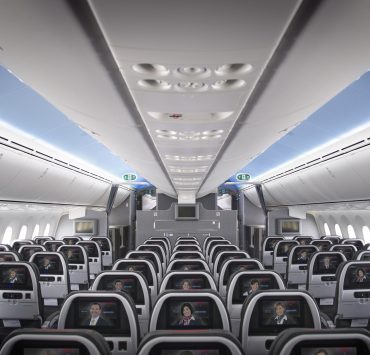
The Qantas Group may well be the largest airline business in Australia but to retain that position the company’s chief executive Alan Joyce is betting big on a making a success of its international long-haul business. Unfortunately, like so many other airlines, Qantas’ recent financial performance has been battered by rising fuel prices and its the international route network which is worst affected.
Qantas today released its half year financial results ending 31st December 2018 and overall the figures were largely positive with underlying profit before tax coming in at $780 million – that does, however, still represent a fall of $179 million on the previous year’s result. The internatinal business saw profits fall 60% during the period despite a positive 7% rise in revenue.
Even with Qantas swapping out ageing fuel hungry Boeing 747’s for far more fuel efficient 787 Dreamliner’s, the airline’s fuel bill still increased by a massive $219 million compared to the same period a year before.
Qantas has embarked on a big transformation of the way it runs its long-haul business. Last year, the airline moved its Dubai stopover to Singapore signalling a distancing relationship with its joint venture buddy Emirates – the two airlines continue to cooperate closely but Qantas ultimately wants to usurp Emirates’ dominance on long-haul flights between Australia and Europe.
The Sydney-based airline’s Project Sunrise has already seen the introduction of a direct 17-hour service between Perth and London and even longer flights are expected in just a few years. Qantas says the success of its Perth-London operations give it confidence in its strategy to pursue ultra-long-haul flights – describing it as a “unique competitive advantage”.
While Qantas doesn’t release the seat load factor for individual routes, the airline revealed that the average load factor on international services was currently hitting more than 85%.
Perth is now being leveraged as a major onshore hub to feed passengers into the domestic network – a star perfomer with a record profit of $659 million during the period. Joyce says the airline group is successfully using the complimentary full-service Qantas and low-cost Jetstar brands to build its domestic business.
“Internationally, our performance was heavily impacted by higher fuel costs, mostly because of the long-haul nature of our network and the effect that has on fuel burn,” commented Alan Joyce.
He continued: “We remain very positive about the fundamentals of Qantas International. It received another three Dreamliners in the first half, taking the total fleet to eight. And as expected, they are steadily transforming the economics of the routes they fly.”
A new drive for the airline group is to dramatically reduce the amount of waste it produces. Along with the last of the inefficient 747’s being retired by the end of 2020, Qantas also says it will become the first airline in the world to cut the amount of waste is sends to landfill by 75 per cent by the end of 2021.
The details are still sketchy but Qantas is looking at ways to reduce, reuse and recycle what it currently uses onboard. Like many other airlines, Qantas will be hampered by strict bio-security rules on international services but it says it will work with industry partners on “innovative” solutions.
Mateusz Maszczynski honed his skills as an international flight attendant at the most prominent airline in the Middle East and has been flying throughout the COVID-19 pandemic for a well-known European airline. Matt is passionate about the aviation industry and has become an expert in passenger experience and human-centric stories. Always keeping an ear close to the ground, Matt's industry insights, analysis and news coverage is frequently relied upon by some of the biggest names in journalism.









